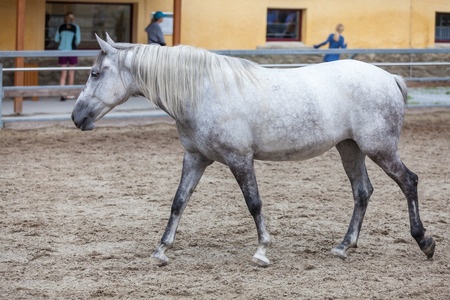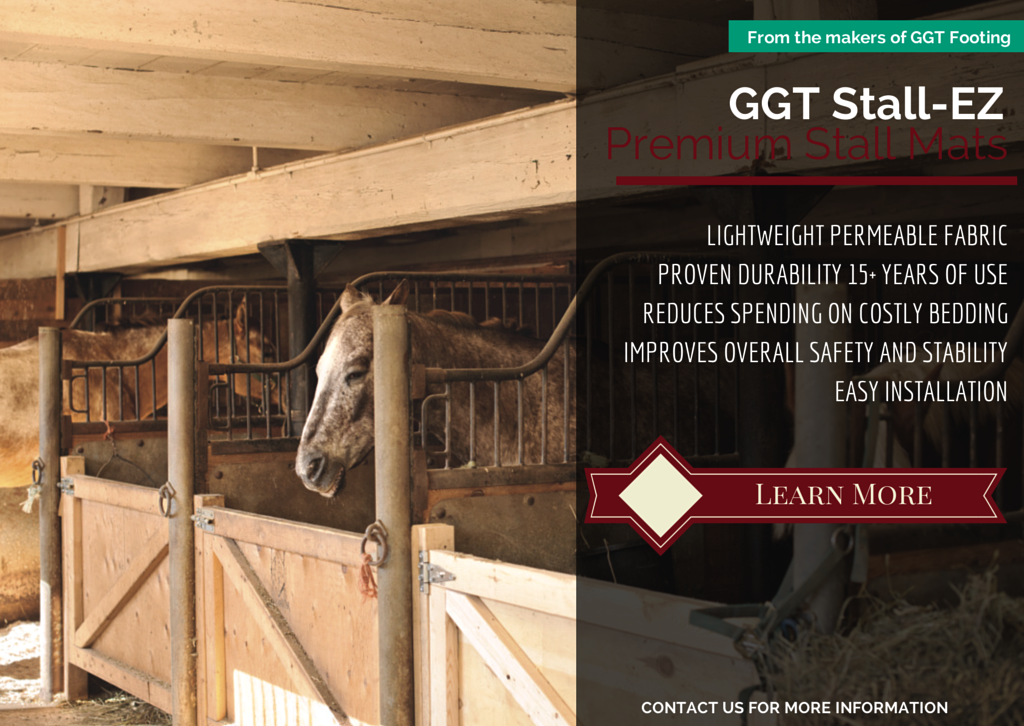Sand is a very generic term. It means a mineral substance that has particles smaller than gravel but larger than silt or clay. Sand is defined by the size of the particles, the shape of the particles, and the minerals used to make up the particles. As footing, sand is also defined by how deep the sand is.

Caption: The Lipizzaner is such a valued horse that it gets a good sandy footing for the safety.
Source
Natural sand is usually composed of silica. Natural sand is created by the erosion of quartz by water. It comes in round or angular shapes and tends to be very hard and resistant to breaking down. Manufactured sand is created by crushing rocks. The mineral composition of the product varies, but most have sharp particle shapes. Manufactured sand is sold as stone dust, fines, or crusher fines. It tends to break down faster than natural sand.
Size
The size of the sand particles is defined commercially by shaking the sand through filters with known pore sizes. Very coarse sand has particles around 2 mm in diameter and very fine sand has particles around 0.075 mm in diameter. The purer the sand the less stable it is- if it is all of one size with all of the silt washed out it tends to roll underfoot. Sand that contains a wider range of particle sizes and hasn't had all of the silt washed out provides a more stable surface. Preparing sand to be all of one size is described as "grading" it.
Shape
The shape of the particles affects the stability of the sand. Round sand particles tend to roll and slide underfoot, sharp sand particles tend to compact underfoot into a hard concrete-like surface, and angular sand particles tend to provide the best surface, with some stability and cushion. A mix of round sand and sharp sand can help to stabilize the round sand and keep the sharp sand from compacting.
Selection
Sand is heavy and expensive to ship. As a consequence, most individuals constructing horse footing start out by determining what type(s) of sand are available from nearby sources, and then evaluating those sands for their properties. To add to the complexity, practically every quarry uses unique names to describe their various products. What one quarry calls "arena sand" may be very different from another quarry's "arena sand." Samples of the sand must be obtained and examined, and the technical specification sheets must be obtained and studied.
Additives
Once the local types of sand have been determined, an analysis of additives is necessary. Many types of sand that would make a poor horse footing by themselves can be turned into excellent footings by adding the correct type of materials. Crumb rubber can stabilize sand, add cushion, and reduce compaction. However, most crumb rubbers don't work well with very fine sands. For very fine sands, textiles are usually a better choice.
The exact details of which sand to choose and which additives to choose vary from situation to situation. The number of combinations and factors to consider can be mind-boggling.
We specialize in constructing arenas and horse footing and would be happy to assist you in designing your footing. Don't hesitate to contact us.
Caption: The Lipizzaner is such a valued horse that it gets a good sandy footing for the safety.Caption: The Lipizzaner is such a valued horse that it gets a good sandy footing for the safety.


